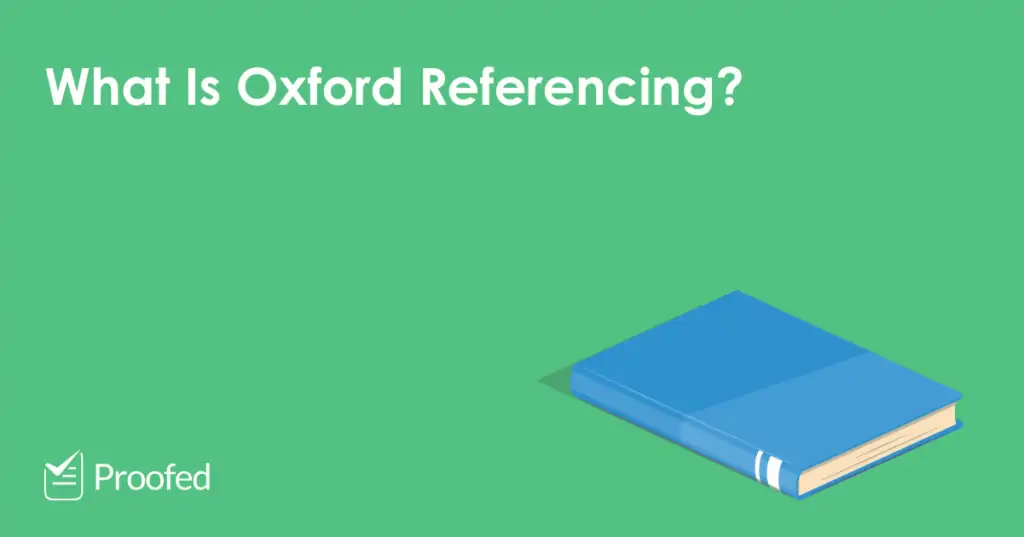Many universities recommend using Oxford referencing to cite sources in essays. But what exactly is Oxford referencing? And how does it work? In today’s blog post, we look at the basics of this system.
Q1: What Is Oxford Referencing?
Oxford referencing is a footnote and bibliography system. This means you should give citations in footnotes, indicated with superscript numbers:
Usually at the end of a sentence, like this.1
The first footnote for each source should include full publication information, as well as a pinpoint reference (i.e. the specific page or section cited). And although you provide the source information here, you will also need to list it in the bibliography at the end of your document.
Q2: Where Can I Find the Rules for Oxford Referencing?
Technically, ‘Oxford referencing’ is not a system so much as a group of related citation styles (otherwise known as the footnote–bibliography style).
Consequently, there aren’t any ‘official’ rules for Oxford referencing. Your best bet is thus to check your university’s style guide, which should specify the rules they use. There are plenty of online sources, but these might differ from the version preferred by your university.
Ultimately, if your referencing is clear and consistent, slight variations shouldn’t matter too much. But it never hurts to check whether your university has a style guide available.
Q3: What Goes in Footnotes?
As above, this depends slightly on the version of the system you’re using. It also depends on the source type (e.g. book, website, video). But in general, the key details to include are:
- Author’s name
- Title of the book, article or web page
- Title of the journal, website or edited book
- Place of publication
- Date of publication
- Page or section numbers
For online sources, you should also give a URL and a date of access.
Find this useful?
Subscribe to our newsletter and get writing tips from our editors straight to your inbox.
Repeat citations of the same source, meanwhile, will typically use either Latin abbreviations (e.g. ibid., op. cit., loc. cit.) or a shortened citation format. For example, we could use the following shortened citation style:
1. C. Alexander, Mrs Chippy’s Last Expedition: The Remarkable Journey of Shackleton’s Polar-Bound Cat, London, Bloomsbury, 1991, p. 24.
2. A. Moretti, Cats of the Internet [website], 2014, <www.felinesonline.com/gallery>, accessed 6 June 2017.
3. Alexander, p. 30.
Here, for example, we’ve shortened the third citation to just the author’s surname and a page number. And as long as we only cite one source by ‘Alexander’ in our essay, this will be enough for the reader to know which source we’re citing each time.
Q4: How About the Bibliography?
Bibliography entries in Oxford referencing are usually similar to the first footnote citation for the same source. The main differences are that:
- You do not need to give a pinpoint reference.
- Give the first named author’s names surname first (e.g. ‘Smith, S.’ instead of ‘S. Smith’) so that you can list sources by author surname.
For example, we would list the entry for the book in the example above as:
Alexander, C., Mrs Chippy’s Last Expedition: The Remarkable Journey of Shackleton’s Polar-Bound Cat, London, Bloomsbury, 1997.
Q5: What Does Any of This Have to Do with Oxford?
Very little. It is sometimes associated with the University of Oxford, but it’s not the only referencing system used there. However, most versions of Oxford referencing are variations of the footnote and bibliography system set out in the OUP’s New Oxford Style Manual.



